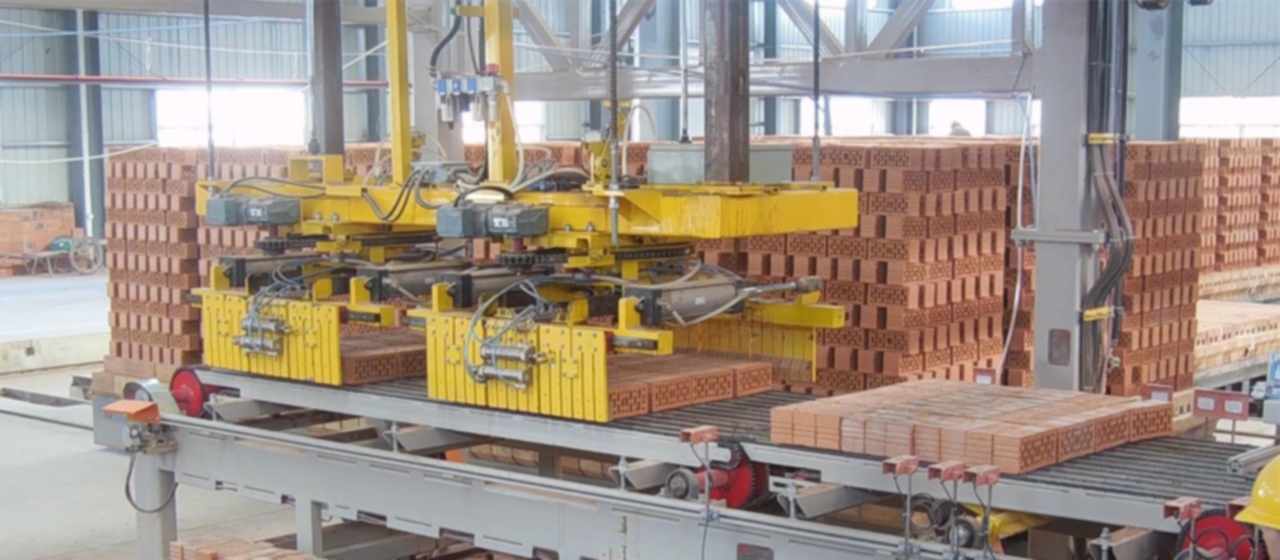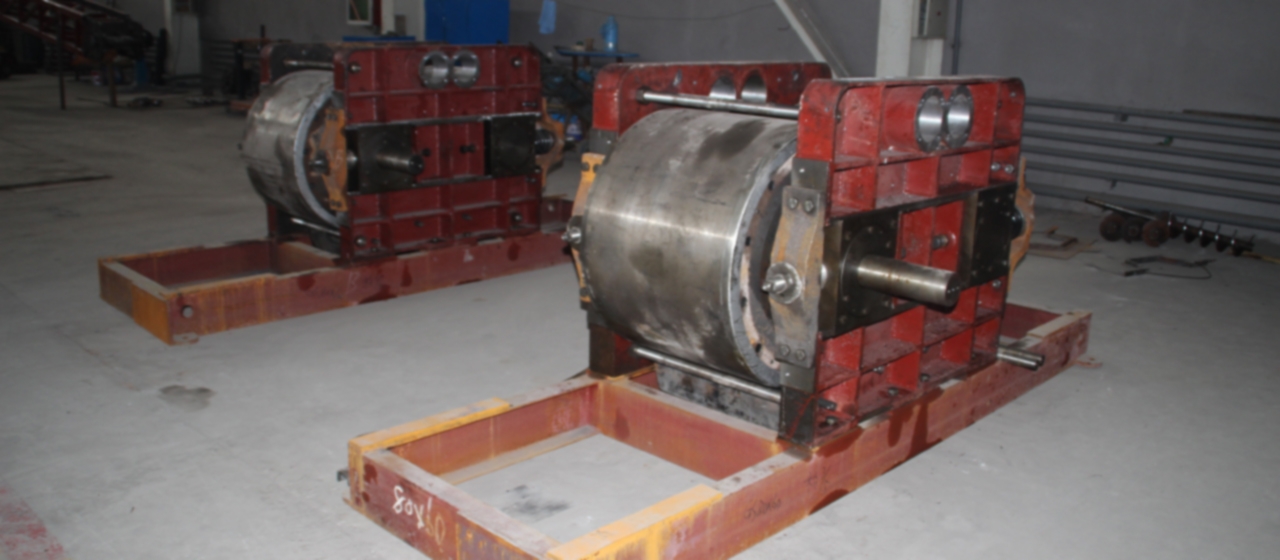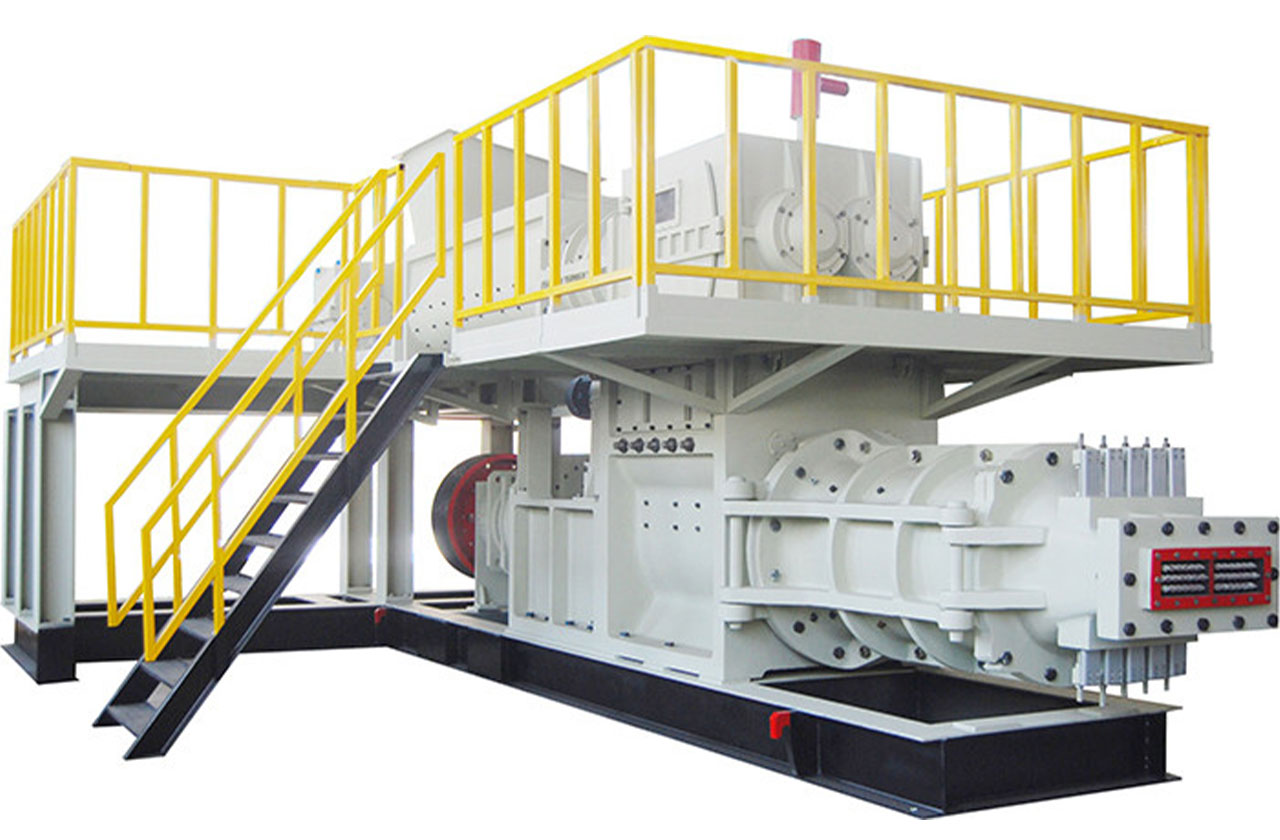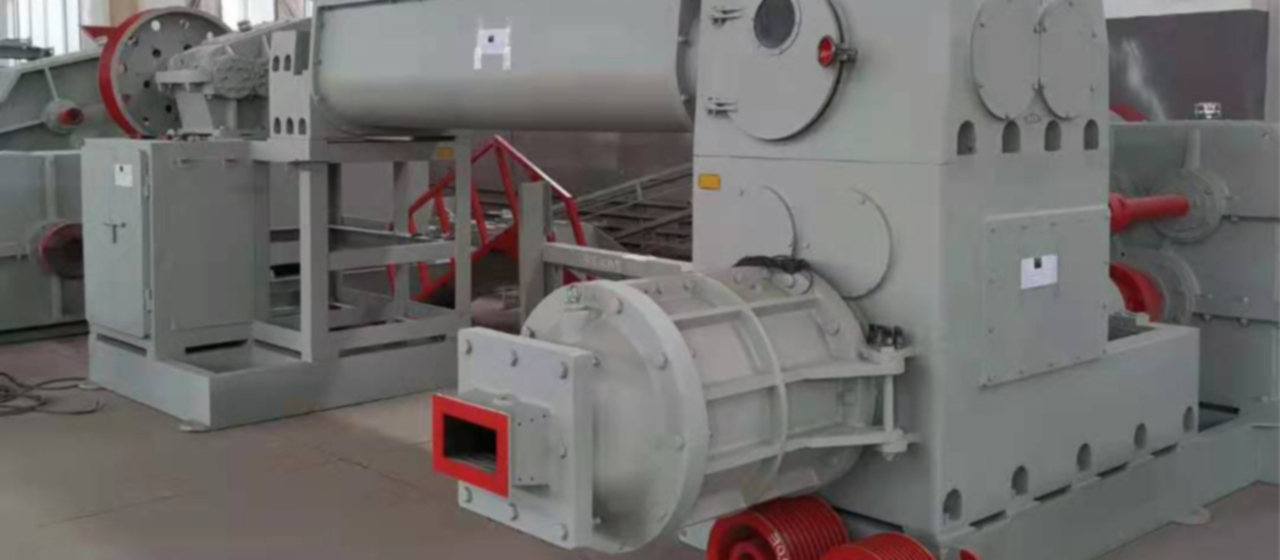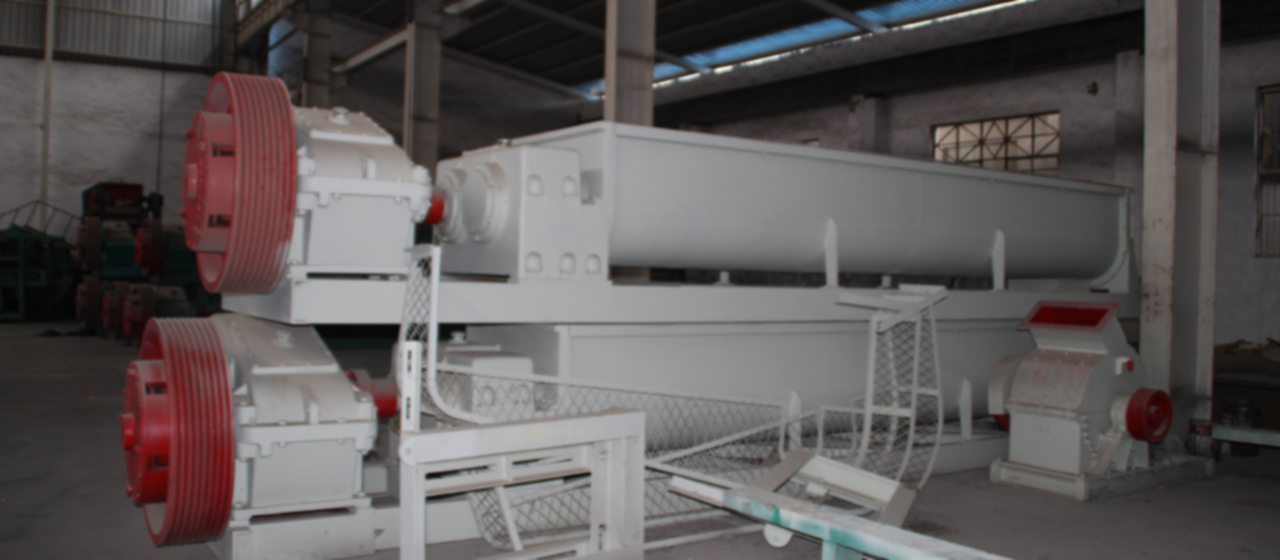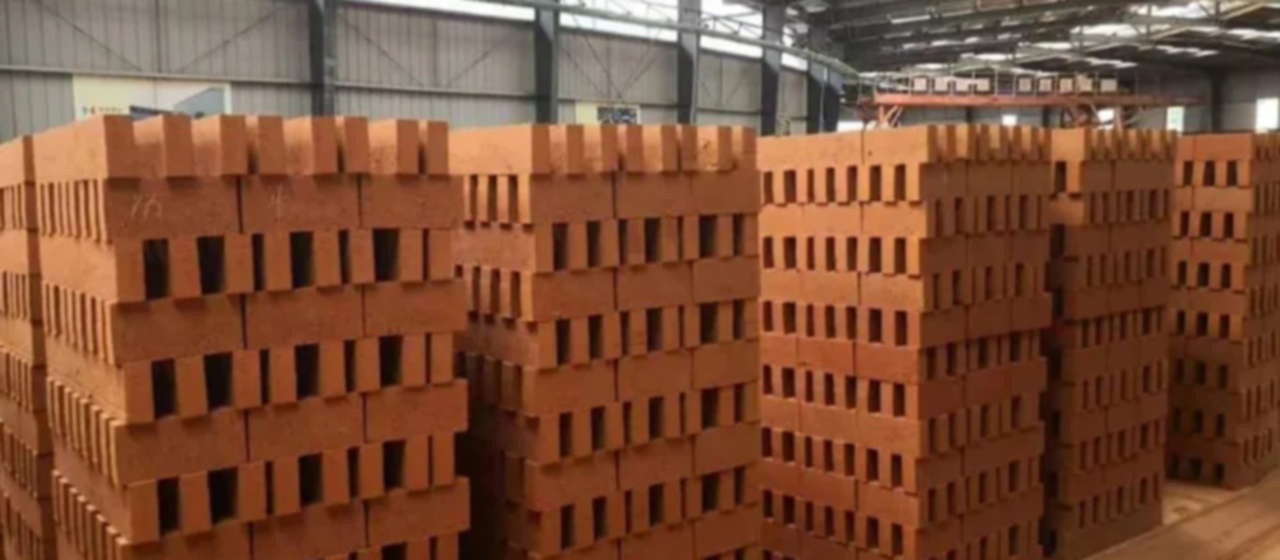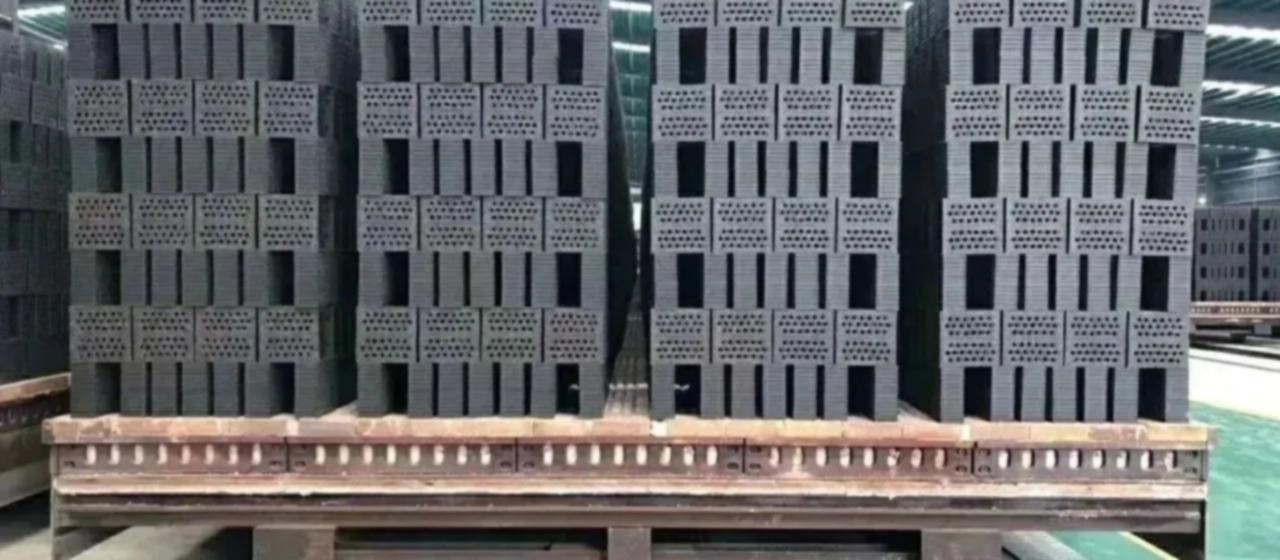Brick making in a brick factory
Brick making in a brick factory is very similar to steaming Mantou. Breaking raw materials is equivalent to grinding wheat into flour. Mixing raw materials with water is to mix flour; When the mud enters the aging warehouse for aging, it is equivalent to fermenting the mixed flour in a basin; Molding is to process the mud into the desired shape, which is identical to the Mantou made by kneading the fermented dough, except that the Mantou is steamed by steam, while the brick is cooked by high temperature.

Common forming process: multi bucket machine for material retrieval → → belt conveyor → → box feeder → → secondary stirring → → brick machine (re mixing) → → cutting machine → → cutting machine → → grouping machine → → coding machine → kiln car
Special forming process: Multi bucket machine for material retrieval → → Belt conveyor → → Box feeder → → Wet wheel mill (or roller crusher) → → Second stirring → → Brick machine (re mixing) → → Cutting machine → Cutting machine → → Grouping machine → Code machine → Kiln car
For ease of management, the aging warehouse is generally placed under the management of the molding workshop. The function of the box feeder is to evenly feed and prevent the material flow from fluctuating. Uneven material flow not only affects the output of the brick machine, but also affects the quality of the brick billet, because the upper mixing pool is adjacent to the extrusion section, which is connected to the extrusion chamber of the brick machine. In order to ensure the compactness of the brick billet, air is extracted from this chamber, which is called vacuum pumping. The denser the mud material in the upper mixing extrusion section is squeezed with the cylinder body, the better the vacuum pumping effect, and the higher the vacuum degree. At this time, the denser the brick blank is. But if the material flow is small, then the sealing between the upper mixing and extrusion section mud and the cylinder body is poor, the vacuum degree is low, and the compactness of the brick blank is also poor.
The function of secondary stirring is to adjust the moisture content of the mud during the intermediate stage of re stirring, by adding water to make the mud reach or approach the formed moisture content. There are two types of secondary stirring. The traditional secondary stirring is a dual axis mixer, which only plays a stirring role and is suitable for extrusion of soft and semi hard plastics; Single axis mixers are equipped with extrusion sections, which aim to strengthen kneading and ensure even moisture content of the mud, making them suitable for hard plastic extrusion molding.
Regarding the classification of molding methods, international standards classify them according to extrusion pressure:
1. The actual molding working pressure is 0.4-1.8 MPa (commonly used in Western Europe to indicate pressure bar, 1 bar=1.02 kg/cm2), which is for soft plastic molding;
2. The actual working pressure for forming is 1.8-2.5MPa, which is considered semi hard plastic forming;
3. The actual molding working pressure is above 2.5MPa, and the highest can reach 8.0MPa for hard plastic molding.
Some countries are accustomed to dividing according to the formed moisture content.
The classification method in the United States is divided into two types: hard plastic and soft plastic. ① Hard plastic extrusion: the molding moisture is 12-20% (wet basis), and the formed brick has sufficient strength, can be stacked up to 2 meters high without deformation, and can achieve one-time stacking and firing; ② Soft plastic extrusion: The moisture content of the formed brick is 20-30% (wet basis), and the strength of the formed brick is low, so it can only be fired twice;
German classification method: ① Soft plastic extrusion: molding moisture content is 19-27% (dry basis), actual molding pressure is 0.4-1.8 MPa, brick penetration tester strength is 2 kg/cm2; ② Semi hard plastic extrusion: the molding moisture is 15-25% (dry basis), the actual molding working pressure is 1.8-2.5 MPa, and the strength of the brick penetration tester is 2-3kg/cm2; ③ Hard plastic extrusion: The molding moisture is 12-16% (dry basis), and the commonly used actual molding pressure is 2.5-4.5MPa. The strength of the brick penetration tester is ≥ 3kg/cm2.
The so-called wet basis and dry basis refer to two different expressions of the moisture content of the same raw material. Assuming the mass of the raw material is M and the free water content is M1, the percentage of M1 to M ratio is the wet basis moisture content, and the percentage of M1 to M-M1 ratio is the dry basis moisture content.
There is currently no unified classification standard in our country. In fact, dividing the molding method by pressure is relatively accurate, but sometimes it is not necessarily accurate to divide it by molding moisture. For example, the natural moisture content of the Yellow River silt in the Shandong section of the lower Yellow River reaches over 20%. No matter how high the molding pressure is, its moisture content will not change with the molding pressure, and this type of material cannot be squeezed out using a soft plastic brick machine.
The function of wet roller is twofold: firstly, to reduce the critical particle size of the mud; secondly, to increase the kneading effect, making the water even, while also playing a further mixing role.
The function of roller crushing is the same as that of wheel milling, but its effect is not as good as that of wheel milling.
The functions of wheel milling, roller crushing, and secondary stirring are all aimed at making the mud easier to form. However, adding processing equipment in the forming process is not as good as processing the raw materials in advance. Firstly, after the raw materials are crushed, they belong to dry materials and are easy to handle before entering the primary stirring process. Secondly, after the raw materials are processed in the raw material process, they enter the aging warehouse and undergo an aging process, which brings more benefits to the materials.
The brick machine is the core equipment for molding, which largely determines the product quality of the brick factory. At present, due to the low quality requirements for bricks in the domestic construction market, our industry does not have very high requirements for product quality, and the product grade is also low. The vast majority of products are still mainly produced with solid bricks, ordinary porous bricks, and hollow blocks, so the requirements for brick machines are not high. However, not all brick machines can meet the requirements. The true development of brick machine production enterprises in our country began with the introduction of foreign equipment at the end of the last century. Currently, there are more than 100 brick machine manufacturers in China, and their development is very uneven. The leading role is played by the first manufacturer to introduce foreign equipment, because they directly digest foreign technology, so the quality is still guaranteed. Many small and medium-sized equipment manufacturers lack specialized research and development personnel, and their quality management is not strict, resulting in unsatisfactory equipment quality and after-sales service.
According to the experience of some advanced German companies, each type of raw material must be designed according to its characteristics for brick machines. Before production, multiple experiments and tests are conducted on the raw materials, and the extrusion parameters are simulated through a computer simulation system. Then, the core part of the extruder is designed based on these parameters. The success rate of the extruder produced by this method is basically 100%, and the energy-saving effect is also the best. At present, our country is unable to meet this requirement. Often, a set of brick machines travels across the country, whether it is coal gangue, shale, or tailings, using a set of products. It is not the brick machine that adapts to your raw materials, but the raw materials need to adapt to the brick machine, so problems are inevitable. Of course, this is also a transitional or developmental period. With the improvement of product quality, the quality of brick machines will also get better and their adaptability will become stronger.
The coding machine has begun to be popularized in China, and it is the main equipment for liberating labor in the brick and tile industry, and also the future development trend.
Mechanized coding not only solves the problem of labor, but also has great benefits in increasing production and product quality. Artificial palletizing not only incurs high costs, but also makes it difficult to achieve uniformity and uniformity, making it difficult to maintain consistency in the front and back of the furnace, resulting in high ventilation resistance and unstable product quality. The mechanical code blank can be neat and uniform, consistent in front and back, with low ventilation resistance, which can improve the speed of production and make product quality easy to control.
- Performance and Technical Parameters:
| 型号
Model |
JKY55/55-40
JKY55/55-40 |
备注
Remarks |
| 生产能力(块/小时)
Production capacity (pieces/h) |
12000~17000(标砖)
12,000~17,000 pieces (standard brick) |
|
| 挤出压力(MPa)
Extrusion pressure (Mpa) |
≥4.0
≥4.0 |
|
| 配用动力(KW)
Required power (KW) |
上级:Yy315s-6/75kw
Upper stage: Yy315s-6/75kw |
|
| 下级:Y355m-6/200kw
Lower stage: Y355m-6/200kw |
||
| 真空压力
Vacuum pressure |
≥-0.092
≥-0.092 |
|
| 主轴转速(转/分钟)
Main shaft speed (rpm) |
上级:38
Upper stage: 38rpm |
|
| 下级:25
Lower stage: 25rpm |
||
| 成型含水量(湿基%)
Shaping moisture content (wet basis %) |
16 ~ 20
16 ~ 20 |
|
| 原料塑性指数
Raw material plasticity index |
7 ~ 15
7 ~ 15 |
|
| 配用减速机
Required reducer |
上级:ZLY600D i=10.89
Upper stage: ZLY600D i=10.89 |
|
| 下级:ZLY960B i=15.95
Lower stage: ZLY960B i=15.95 |
||
| 配用三角带
Required V-belt |
上级:7— SPB-4700
Upper stage: 7-SPB-4700 |
|
| 下级:9 — SPC-5500
Low stage: 9-SPC-5500 |
||
| 配用真空泵(水环式)
Required vacuum pump (water circulation type) |
2SK ~ 6 ~ 2SK-12
2SK ~ 6 ~ 2SK-12 |
|
| 配用电机:Y15 ~ 22KW
Required electric motor: Y15 ~ 22KW |
||
| 外型尺寸mm 长×宽×高
Overall dimension mm length × width × height |
5350×5550×2510
5,350×5,550×2,510 |
|
| 以上有关参数因原料或砖型不同将有所变化。
The above related parameters may change due to different raw material or brick type. |
||

